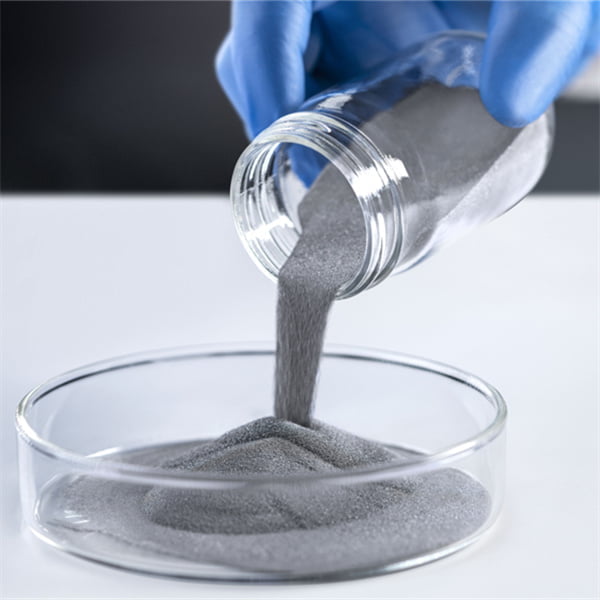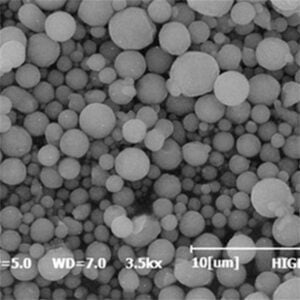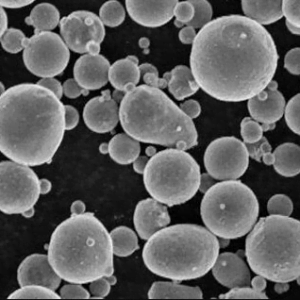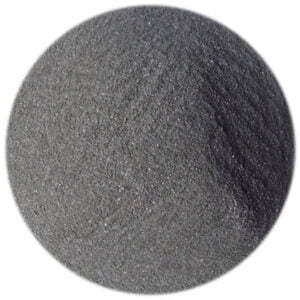Introduction to HIP Technology
Obsah
Have you ever wondered how seemingly solid objects like turbine blades or artificial kyčelní kloub joints can be crafted with such intricate details and remarkable strength? The answer lies in a fascinating technology called Izostatické lisování za tepla (HIP). Imagine squeezing a material with intense pressure from all directions while simultaneously subjecting it to scorching temperatures – that’s the essence of HIP. This article delves into the captivating world of HIP technology, exploring its intricacies, applications, and the fascinating world of metal powders it utilizes.
Kouzlo HIP: An Overview
HIP is a post-processing technique that transforms metal powders or fabricated parts by applying extreme heat and uniform, high-pressure gas. This potent combination serves multiple purposes:
- Eliminating Internal Defects: Tiny voids or pores trapped within the material get squished shut by the immense pressure, resulting in a denser, more robust structure. Imagine a sponge being compressed – the air pockets vanish, leaving a more compact and solid form.
- Enhancing Material Properties: The intense heat promotes atomic diffusion, allowing atoms to rearrange and strengthen the material’s internal bonds. Think of it as the atoms getting cozy and holding hands more tightly.
- Zlepšení povrchové úpravy: The pressure ensures the material fills every nook and cranny of the mold, leading to a smoother, more consistent surface finish. Picture a perfectly molded cake with no uneven edges.
The result? Metal components with exceptional strength, fatigue resistance, and dimensional accuracy, making them ideal for demanding applications in various industries.

the Building Blocks of HIP
Metal powders are the foundation of many HIP applications. These tiny, granular particles, typically ranging from micrometers to millimeters in size, come in a vast array, each offering unique properties. Here’s a closer look at some of the most commonly used metal powders in HIP:
- Prášky s plynovou atomizací: Produced by rapidly solidifying molten metal droplets in an inert gas stream, these powders boast high purity, spherical shapes, and excellent flow characteristics. Think of tiny metal rain showers solidifying into perfect spheres.
- Prášky s vodní atomizací: Created by spraying molten metal into a high-pressure water jet, these powders are generally less expensive but have a more irregular shape compared to gas-atomized varieties. Imagine molten metal hitting a powerful jet of water, creating a splatter of irregular shapes.
- Železné prášky: The workhorse of the powder world, iron powders offer a good balance of cost, formability, and magnetic properties. They’re the go-to choice for a wide range of applications, like gears and machine components.
- Prášky z nerezové oceli: Available in various grades, these powders offer excellent corrosion resistance and are widely used in medical implants, chemical processing equipment, and food machinery. Imagine a super strong, rust-proof building block for demanding environments.
- Superslitiny na bázi niklu: Renowned for their exceptional high-temperature strength, these powders are crucial for components in jet engines, gas turbines, and rocket propulsion systems. Think of a material that laughs in the face of extreme heat.
- Titanové prášky: Valued for their lightweight nature, biocompatibility, and high strength-to-weight ratio, these powders are perfect for aerospace parts, medical implants, and sporting goods. Imagine a material that’s strong yet feathery light.
- Hliníkové prášky: Offering excellent formability, conductivity, and corrosion resistance, aluminum powders find use in heat sinks, electrical components, and lightweight structures. Imagine a metal that’s easily shaped, carries electricity well, and resists rust.
- Měděné prášky: Renowned for their high thermal and electrical conductivity, copper powders are used in heat sinks, electrical connectors, and electrodes. Think of a metal champion at conducting heat and electricity.
- Cobalt-Chromium Powders: Highly biocompatible and wear-resistant, these powders are the backbone of artificial hip joints, dental implants, and other orthopedic applications. Imagine a material that’s kind to your body and resists wear and tear.
- Žáruvzdorné kovové prášky: These high-melting-point powders, like tungsten and tantalum, are used in furnace parts, rocket nozzles, and other applications requiring extreme heat resistance. Imagine a material that stays cool as a cucumber even in the face of scorching temperatures.
The choice of metal powder for HIP depends on the desired properties of the final component. It’s a balancing act, considering factors like strength, weight, corrosion resistance, and cost.
Upozornění: This list highlights just a few of the many metal powders used in HIP. With ongoing advancements in powder metallurgy, new and innovative materials are constantly being developed.
aplikace HIP
HIP technology’s versatility shines through its diverse applications across numerous industries. Here’s a glimpse into some of the most prominent areas where HIP makes its mark:
- Letectví: The relentless pursuit of lightweight yet robust components in the aerospace industry makes HIP a perfect fit. Turbine blades, landing gear components, and rocket engine parts all benefit from HIP’s ability to eliminate internal defects and enhance mechanical properties, leading to increased engine efficiency, fuel savings, and improved overall aircraft performance. Imagine a jet engine where every component is flawlessly strong and lightweight, allowing the plane to fly farther and more efficiently.
- Lékařské implantáty: For individuals relying on artificial joints or other orthopedic implants, HIP plays a crucial role. The technology ensures the implants are free of internal voids, leading to improved longevity, better load-bearing capacity, and reduced risk of implant failure. Think of a hip replacement that’s built to last, offering pain-free movement and peace of mind.
- Výroba energie: HIP strengthens the heart of power plants – turbine blades and discs. By eliminating internal cracks and enhancing creep resistance (the ability to withstand deformation under stress at high temperatures), HIP ensures these critical components operate efficiently and reliably for extended periods. Imagine a power plant where turbines spin smoothly and efficiently, thanks to the strength and reliability imparted by HIP.
- Tooling and Die Casting: The world of manufacturing relies heavily on durable tools and dies. HIP strengthens these tools by eliminating internal defects and improving wear resistance. This translates to longer tool life, reduced downtime for maintenance, and ultimately, increased productivity. Imagine a factory where tools stay sharp and strong longer, leading to a smoother and more efficient production process.
- Automobilový průmysl: From lightweight components for fuel efficiency to high-strength parts for performance vehicles, HIP finds its place in the automotive industry as well. Engine blocks, transmission components, and even complex fuel injectors can benefit from HIP’s ability to create near-net-shape parts with exceptional strength and dimensional accuracy. Imagine a car that’s both powerful and fuel-efficient, thanks in part to the use of HIP technology.
- Defense and Military Applications: Military equipment demands exceptional strength and reliability. HIP is employed to create components for firearms, armored vehicles, and even jet engine parts. Here, the technology ensures these components can withstand harsh environments and demanding operational conditions. Imagine a military vehicle that can traverse any terrain and withstand any challenge, thanks to the unwavering strength provided by HIP.
These are just a few examples of how HIP technology is revolutionizing various industries. As research and development continue, we can expect to see even more innovative applications emerge in the future.
the Technical Specifications of HIP Zpracování
For those delving deeper into the technical aspects of HIP, here’s a breakdown of some key parameters:
HIP Processing Parameters Table
| Parametr | Popis |
|---|---|
| Teplota | Typically ranges from 700°C (1292°F) to 2400°C (4352°F), depending on the material and desired outcome. |
| Tlak | Usually falls between 100 MPa (14,500 psi) and 300 MPa (43,500 psi), but can reach even higher values for specific applications. |
| Holding Time | The duration for which the material is subjected to the high temperature and pressure. It varies based on the material thickness and desired level of microstructural modification. |
| Inertní plyn | An inert gas, like argon or nitrogen, is used to create a pressure environment and prevent oxidation of the material during processing. |
| Rychlost chlazení | The rate at which the temperature is lowered after the holding time. This can be controlled to influence the final microstructure of the material. |
Material Properties Affected by HIP
| Material Property | How HIP Improves It |
|---|---|
| Hustota | Eliminates internal voids, resulting in a denser and more robust structure. |
| Mechanická pevnost | Enhances interatomic bonding, leading to increased strength and fatigue resistance. |
| Tažnost | Can improve ductility in some materials by reducing internal stress concentrations. |
| Odolnost proti korozi | May improve corrosion resistance in certain materials by eliminating porosity that can act as pathways for corrosive agents. |
HIP Processing Considerations
While HIP offers numerous advantages, some factors require careful consideration:
- Náklady: The high temperatures and pressures involved can make HIP a more expensive processing technique compared to some conventional methods.
- Materiálová kompatibilita: Not all materials are suitable for HIP. Some materials may experience undesirable grain growth or other adverse effects at the high temperatures involved.
- Geometrie dílu: Complex geometries can pose challenges during HIP processing, as ensuring uniform pressure distribution throughout the part can be difficult. Careful design considerations and process optimization are crucial for successful HIP of intricate components.
HIP Výhody a omezení
HIP Advantages Table
| Výhoda | Popis |
|---|---|
| Eliminates Internal Defects | Closes porosity, leading to a denser and stronger final product. |
| Enhances Mechanical Properties | Improves strength, fatigue resistance, and dimensional stability. |
| Improves Surface Finish | Ensures the material conforms perfectly to the mold, resulting in a smoother surface finish. |
| Výroba síťového tvaru | Allows for the creation of complex near-net-shape components, minimizing the need for post-processing machining. |
| Broad Material Compatibility | Works with a wide range of metals, ceramics, and composites. |
HIP Limitations Table
| Omezení | Popis |
|---|---|
| Náklady | Can be a more expensive processing method compared to some conventional techniques. |
| Kompatibilita materiálů | Not suitable for all materials; some may experience negative effects at high temperatures. |
| Part Geometry Limitations | Complex geometries can be challenging due to ensuring uniform pressure distribution. |
| Omezení velikosti | Large components might require specialized HIP equipment. |

The Future Development of HIP Technology
The future of HIP technology is brimming with exciting possibilities. Here are some key trends to watch:
- Advancements in Powder Metallurgy: The development of new and innovative metal powders with tailored properties will continue to push the boundaries of what achievable with HIP.
- Lower Cost Processing: Research efforts are underway to develop more cost-effective HIP techniques, making the technology accessible to a wider range of applications.
- Larger HIP Units: The development of larger HIP units will enable the processing of even bigger components, opening doors for new applications in sectors like shipbuilding and heavy machinery.
- Integrace s aditivní výrobou: The potential for combining HIP with additive manufacturing (3D printing) holds immense promise for creating complex, high-performance components with superior properties.
Jako HIP technology continues to evolve, we can expect it to play an even more significant role in shaping the future of various industries, from aerospace and medicine to automotive and energy production.
FAQ
| Otázka | Odpovědět |
|---|---|
| What is the difference between HIP and Hot Pressing? | Hot pressing applies pressure only, while HIP combines pressure with high temperature. |
| Can HIP be used to repair parts? | In some cases, HIP can be used to repair cracks or other defects in metal components. |
| What are the safety considerations for HIP processing? | HIP vessels operate under high pressure and temperature, so proper safety protocols and trained personnel are essential. |
| How does HIP compare to other consolidation techniques for metal powders? | HIP offers several advantages over other techniques like sintering, such as superior density and elimination of internal porosity. |
| Where can I learn more about HIP technology? | Numerous resources are available online and in technical libraries, including industry publications and research papers. |
By delving into the world of HIP technology, we discover a fascinating process that transforms metal powders or fabricated parts into high-performance components. From its diverse applications across industries to its potential for future advancements, HIP technology stands as a testament to human ingenuity and its relentless pursuit of creating stronger, more reliable materials for a better tomorrow.
Sdílet na
MET3DP Technology Co., LTD je předním poskytovatelem řešení aditivní výroby se sídlem v Qingdao v Číně. Naše společnost se specializuje na zařízení pro 3D tisk a vysoce výkonné kovové prášky pro průmyslové aplikace.
Dotaz k získání nejlepší ceny a přizpůsobeného řešení pro vaše podnikání!
Související články

Vysoce výkonné segmenty lopatek trysek: Revoluce v účinnosti turbín díky 3D tisku z kovu
Přečtěte si více "O Met3DP
Nedávná aktualizace
Náš produkt
KONTAKTUJTE NÁS
Nějaké otázky? Pošlete nám zprávu hned teď! Po obdržení vaší zprávy obsloužíme vaši žádost s celým týmem.

Kovové prášky pro 3D tisk a aditivní výrobu
SPOLEČNOST
PRODUKT
kontaktní informace
- Město Qingdao, Shandong, Čína
- [email protected]
- [email protected]
- +86 19116340731
















